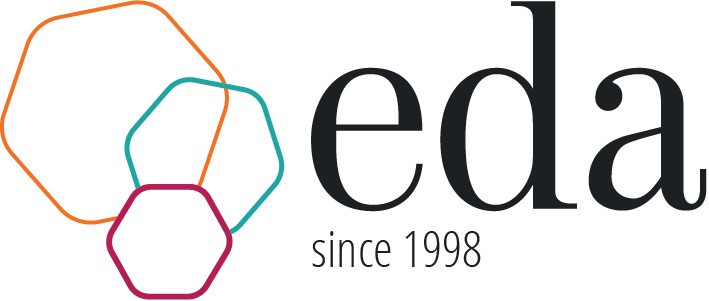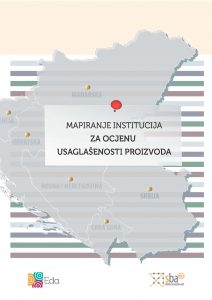In the previous, third blog from the series of solving the “squaring the circle” in the adoption of strategies and policies in BiH, we spoke about indirect harmonization which was used in harmonization the legal and strategic framework, because it is the basis for harmonization of other, specific policies and instruments of SMEs development in BiH.
In this blog, we will speak about the harmonization of such specific policies and support instruments. In such cases, harmonization can be done in two basic ways, top-down and bottom-up, while there is also a combination of these ways which is often used. In the specific context of BiH as a complex state, the choice of one of these two approaches primarily depends on whether, in terms of the constitutional distribution of jurisdictions, appropriate jurisdictions for conducting a respected policy can be located at the state level, in both cases, either these jurisdictions can be determined directly, or their necessity can be determined indirectly. If this can be done, then top-down harmonization is recommended and feasible. If not, it’s worth trying to use a bottom-up harmonization.
The first case applies to the area of quality infrastructure. By definition, quality infrastructure refers to all aspects of metrology, standardization, testing, quality management, certification and accreditation that have an impact on assessing the compliance of products, services and processes with relevant guidelines within a country and internationally. It ensures the compliance of domestic value chains with international systems and value chains. It is a complex network of institutions, whose main elements and relationships are presented in the following figure:

Source: PTB; taken from the presentation: Quality Infrastructure and Green Transformation, Summer Academy 2016, Mesopartner
The point is this: if there was no harmonized system of accreditation, standardization and measurement, and with them certification and testing with control, the exchange of goods and services between different countries would be much more difficult, expensive, slow and complicated.
Within one country, a developed quality infrastructure system looks something like this:

Source: https://www.mesopartner.com/fileadmin/media_center/Other_Publications/Relevance_of_QI_Innovation_Systems_2010_02.PDF
Key bodies are established at the state level and provide services to all within the country, based on their involvement in the international quality system. This is also the case in Bosnia and Herzegovina, where the Institute for Accreditation (http://www.bata.gov.ba), the Institute for Standardization (https://isbih.gov.ba) and the Institute of Metrology (https: // www .met.gov.ba) represents a basic part of the quality infrastructure in BiH, and at the same time part of the European and world network of such institutes, which ensure a unified approach in terms of standardization, accreditation and measurement systems, both within the country and internationally.
Small and medium enterprises, as our target group, are in the fourth circle, and what interests them the most is mostly in the second circle and includes: testing laboratories, calibration laboratories and certification bodies. These are the services they need to get involved and survive in domestic and international value chains. It is especially important for them that these services are available (not too far) and affordable, assuming that their certificates are accepted in the country and in foreign markets where they place their products and services. In addition, they need financial and professional assistance in the introduction of technical standards, without which it is not possible to export, e.g. to the EU single market, while the process of introducing these standards is very demanding and expensive.
The quality infrastructure system in BiH is still far from this picture. Its construction is progressing very slowly, with longer or shorter delays and the occasional dominance of partial perspectives, leading to diversions and abandonment of the main route. At the same time, this issue is often politicized and, causally, the whole picture of the problem is ignored and the interests and needs of the main users are neglected – in our case, small and medium enterprises. When the layers of political fog and lack of understanding are dispelled, it becomes clear that the interest of all in BiH is to build and develop a coherent quality infrastructure system, harmonized with the international system, and such goal requires an appropriate strategy, in whose formulation, adoption and implementation all stakeholders should participate. The development of such a strategy is an example of top-down harmonization, and its result should be that each level of government in BiH and all interested sectors recognize their place and contribution to the construction and development of such a system. There are many challenges and a lot of work for each level and for each sector: for the level of BiH especially in the first circle of the system, for the entities especially in the second and third circle; for the private sector and universities especially in the second and third circles, for associations in the third circle. And for altogether, much more of good will and work to ensure quality mutual communication and coordination, as well as the integration of partial perspectives and interests into a broader perspective, from which it is only possible to reach good and sustainable solutions.
In the harmonized draft of the Strategic Guidelines for Harmonization of SME Support Development 2021-2027, top-down harmonization in this area is envisaged within the first strategic goal (Restoring and strengthening the position of SMEs in global value chains) and priority 1.2. (Progress regarding standards and technical regulations relevant to SMEs). The following measures are envisaged for the realization of this priority:
- 1.2.1. Creating and adopting a comprehensive strategy for the development of quality infrastructure;
- 1.2.2. Improving inter-institutional cooperation in the area of quality infrastructure;
- 1.2.3. Increasing the participation of SMEs in the process of standard development and the work of expert bodies in the field of standardization;
- 1.2.4. Improving SMEs’ access to standards;
- 1.2.5. Alignment and implementation of the legislative framework with the EU acquis in the area of technical regulations for products, conformity assessment and market surveillance.
The implementation of some of these measures has already begun, but there has been a stalemate due to the political crisis and a stalemate in the functioning of institutions at the BiH level.
An example of harmonization of the instrument for support of SMEs refers to measure 1.2.4. Improving SMEs’ access to standards. The implementation of this measure should significantly facilitate the export of SMEs to demanding foreign markets, in accordance with EU directives/regulations of the new approach, because meeting the relevant technical standards is a necessary condition for exporting products to the EU single market. Two dimensions of the SME Policy Index are intertwined here: dimension 7 (Standards and technical regulations) and dimension 10 (Internationalization of SMEs), so that coordinated interventions can make simultaneous progress in both dimensions. Within this measure, it is recommended to use the harmonized instrument for financial support to the introduction of standards in BiH, which was developed in the appropriate policy study (https://edabl.org/zasto-i-kako-podrzati-uvodjenje-tehnickih-standarda-u-preduzecima -policy-study).
The instrument was developed based on the expressed interest of export-oriented SMEs, through workshops on the types of support they need most, using the knowledge and experience of experts and practitioners in this field, with valuable cooperation of institutions dealing with support for SME internationalization and standardization. It starts from the requirements of European technical legislation (ETL) in all relevant aspects, as well as the importance of technical standards for exports, and analyzes the current situation in BiH in terms of policies and practices of business support, as well as technical and trade barriers. The process of introducing technical standards in the sectors of metal processing and wood processing, in which a significant part of BiH exports is realized, is described in detail.
Based on all this, two modalities of financial support to SMEs in the introduction of technical standards are being developed, namely: basic scope of co-financing (M1), which includes co-financing 5 activities and extended scope of co-financing (M2), which includes co-financing 9 out of 18 activities. For each of these activities, a cost estimate and the recommended amount of co-financing were provided, both for metalworking and woodworking. In addition, the expected effects for each co-financed activity were presented. After that, the basic steps of the procedure for allocating funds were described and a model of public call was presented, which ensures transparency of the process and enables all interested SMEs that meet required conditions to apply for co-financing the introduction of technical standards. The public call model includes the following elements: subject and purpose of the call, conditions for application (completeness and eligibility), amounts of funds and method of financing, criteria and rules for evaluation of applications, ranking, notification and contracting, as well as reporting, monitoring and evaluation of support results.
Such developed instrument can be used by any level of government in BiH, if it wants to support export-oriented companies in its area. In this way, the uniformity of support is ensured, with the scope and amount of support depending on the ambitions and resources of each interested level. In addition, recommendations were provided to avoid situations where one company receives funds from two sources for the same standard and the same type of support.
Although this blog is already too long, it seems that it would not be superfluous to emphasize the importance of quality mutual communication and coordination, as well as looking at things from a perspective that is broader than local, entity and state. A real example is the construction of the part of the quality infrastructure system for which SMEs are most interested, and it is in the second circle of the picture above, primarily the testing laboratory, i.e. the conformity assessment body. Their establishment and functioning is expensive, and sustainability depends on the degree of use by companies and the price they can pay for it. And that depends on how good the services that such laboratories provide are and how much they are recognized in the markets that interest companies. Those who are better acquainted with this issue know how important it is to see potential locations for laboratories from a broader perspective (where such accredited bodies are already located in BiH and around) and to carefully analyze and assess where there is still some potential for such bodies. Only from the intersection of these two perspectives and only with quality communication and cooperation of interested institutions good enough decisions can be made where and how to support the establishment and development of conformity assessment bodies. A good starting point could be the study “Mapping of institutions for conformity assessment of products” (https://edabl.org/mapira-institucija-za-ocenju-usaglasenosti-proizvoda) in which existing testing laboratories, control bodies, certification bodies and bodies for certification of persons in BiH, Serbia, Croatia, Slovenia, Montenegro and Hungary, for four export-oriented sectors: metal processing, wood processing, food industry and plastics industry. In addition, based on current capacity and interest, the study recommended institutions/firms for potential conformity assessment bodies.
In this blog, we have presented some parts of the complex mosaic of harmonization in the case where a top-down approach is possible and useful. In the next blog in this series, we will face a situation where such an approach is not possible, and therefore it is useful to achieve a significant level of harmonization of specific policies and instruments to support the development of SMEs in BiH.
The examples we use have been tested and developed within the project SBA in BiH, implemented by Eda with the financial support of Sweden, through the Embassy of Sweden in BiH.










